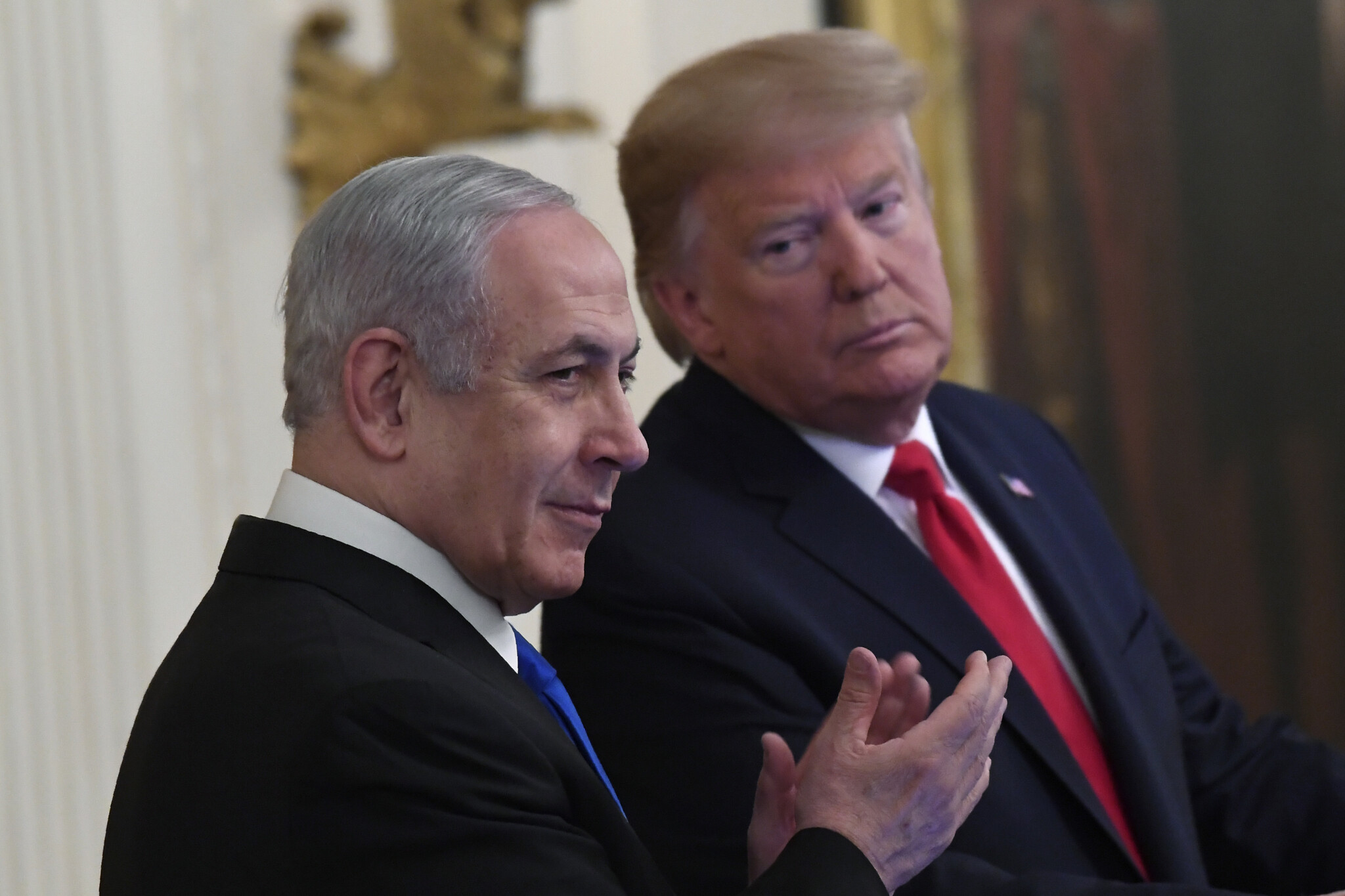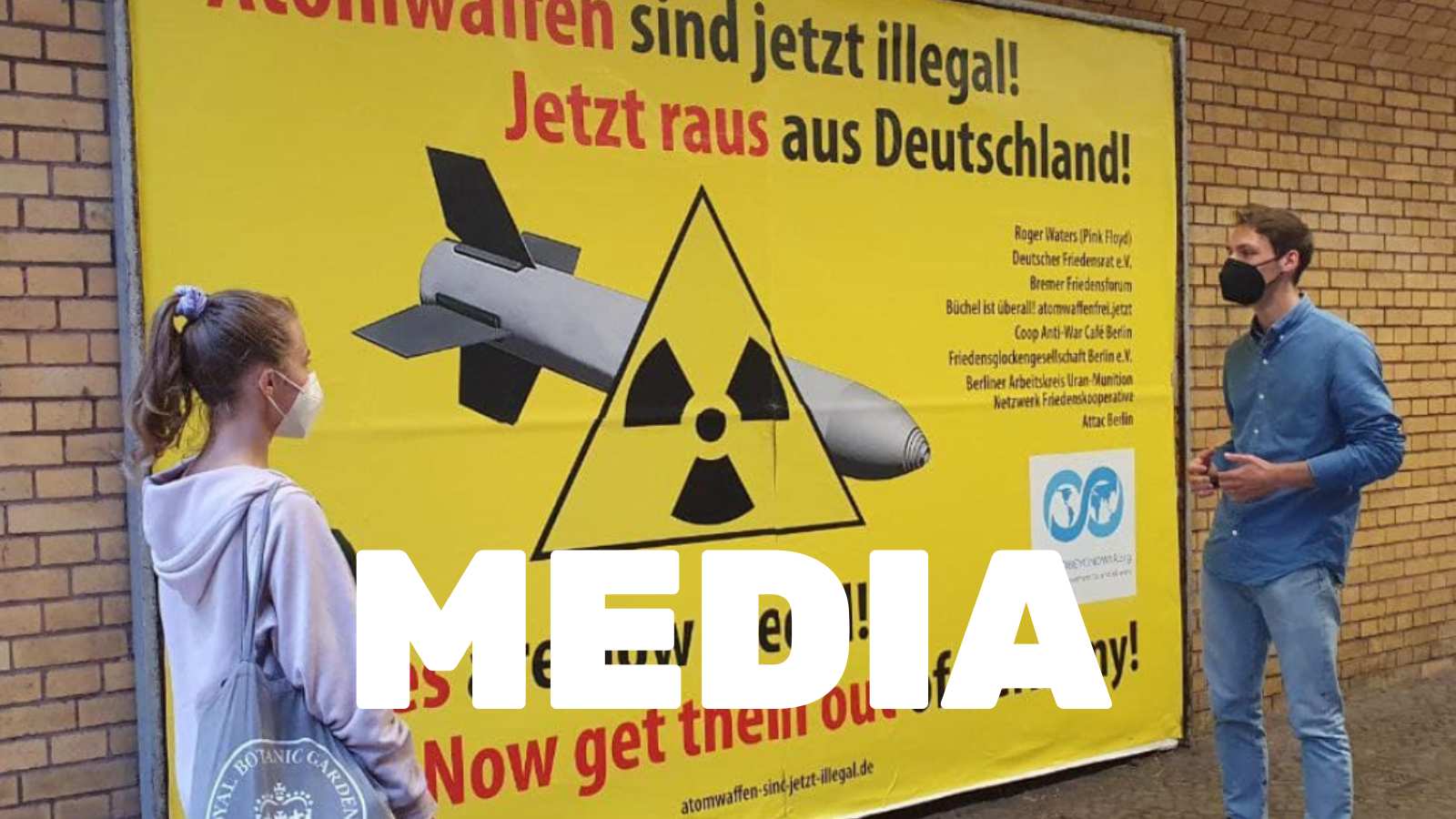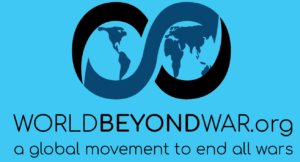
By William D. Hartung, October 14, 2020
From TomDispatch.com
The United States has the dubious distinction of being the world’s leading arms dealer. It dominates the global trade in a historic fashion and nowhere is that domination more complete than in the endlessly war-torn Middle East. There, believe it or not, the U.S. controls nearly half the arms market. From Yemen to Libya to Egypt, sales by this country and its allies are playing a significant role in fueling some of the world’s most devastating conflicts. But Donald Trump, even before he was felled by Covid-19 and sent to Walter Reed Medical Center, could not have cared less, as long as he thought such trafficking in the tools of death and destruction would help his political prospects.
Look, for example, at the recent “normalization” of relations between the United Arab Emirates (UAE) and Israel he helped to broker, which has set the stage for yet another surge in American arms exports. To hear Trump and his supporters tell it, he deserves a Nobel Peace Prize for the deal, dubbed “the Abraham Accords.” In fact, using it, he was eager to brand himself as “Donald Trump, peacemaker” in advance of the November election. This, believe me, was absurd on the face of it. Until the pandemic swept everything in the White House away, it was just another day in Trump World and another example of the president’s penchant for exploiting foreign and military policy for his own domestic political gain.
If the narcissist-in-chief had been honest for a change, he would have dubbed those Abraham Accords the “Arms Sales Accords.” The UAE was, in part, induced to participate in hopes of receiving Lockheed Martin’s F-35 combat aircraft and advanced armed drones as a reward. For his part, after some grumbling, Israeli Prime Minister Benjamin Netanyahu decided to one-up the UAE and seek a new $8 billion arms package from the Trump administration, including an additional squadron of Lockheed Martin’s F-35s (beyond those already on order), a fleet of Boeing attack helicopters, and so much more. Were that deal to go through, it would undoubtedly involve an increase in Israel’s more than ample military aid commitment from the United States, already slated to total $3.8 billion annually for the next decade.
Jobs, Jobs, Jobs
This wasn’t the first time President Trump tried to capitalize on arms sales to the Middle East to consolidate his political position at home and his posture as this country’s dealmaker par excellence. Such gestures began in May 2017, during his very first official overseas trip to Saudi Arabia. The Saudis greeted him then with ego-boosting fanfare, putting banners featuring his face along roadways leading into their capital, Riyadh; projecting a giant image of that same face on the hotel where he was staying; and presenting him with a medal in a surreal ceremony at one of the kingdom’s many palaces. For his part, Trump came bearing arms in the form of a supposed $110 billion weapons package. Never mind that the size of the deal was vastly exaggerated. It allowed the president to gloat that his sales deal there would mean “jobs, jobs, jobs” in the United States. If he had to work with one of the most repressive regimes in the world to bring those jobs home, who cared? Not he and certainly not his son-in-law Jared Kushner who would develop a special relationship with the cruel Saudi Crown Prince and heir apparent to the throne, Mohammed bin Salman.
Trump doubled down on his jobs argument in a March 2018 White House meeting with bin Salman. The president came armed with a prop for the cameras: a map of the U.S. showing the states that (he swore) would benefit most from Saudi arms sales, including — you won’t be surprised to learn — the crucial election swing states of Pennsylvania, Ohio, and Wisconsin.
Nor will it surprise you that Trump’s jobs claims from those Saudi arms sales are almost entirely fraudulent. In fits of fancy, he’s even insisted that he’s creating as many as half a million jobs linked to weapons exports to that repressive regime. The real number is less than one-tenth that amount — and far less than one-tenth of one percent of U.S. employment. But why let the facts get in the way of a good story?
American Arms Dominance
Donald Trump is far from the first president to push tens of billions of dollars of arms into the Middle East. The Obama administration, for example, made a record $115 billion in arms offers to Saudi Arabia during its eight years in office, including combat aircraft, attack helicopters, armored vehicles, military ships, missile defense systems, bombs, guns, and ammunition.
Those sales solidified Washington’s position as the Saudis’ primary arms supplier. Two-thirds of its air force consists of Boeing F-15 aircraft, the vast bulk of its tanks are General Dynamics M-1s, and most of its air-to-ground missiles come from Raytheon and Lockheed Martin. And mind you, those weapons aren’t just sitting in warehouses or being displayed in military parades. They’ve been among the principal killers in a brutal Saudi intervention in Yemen that has sparked the world’s worst humanitarian catastrophe.
A new report from the Arms and Security Program at the Center for International Policy (which I co-authored) underscores just how stunningly the U.S. dominates the Middle Eastern weapons market. According to data from the arms transfer database compiled by the Stockholm International Peace Research Institute, in the period from 2015 to 2019 the United States accounted for 48% of major weapons deliveries to the Middle East and North Africa, or (as that vast region is sometimes known acronymically) MENA. Those figures leave deliveries from the next largest suppliers in the dust. They represent nearly three times the arms Russia supplied to MENA, five times what France contributed, 10 times what the United Kingdom exported, and 16 times China’s contribution.
In other words, we have met the prime weapons proliferator in the Middle East and North Africa and it is us.
The influence of U.S. arms in this conflict-ridden region is further illustrated by a striking fact: Washington is the top supplier to 13 of the 19 countries there, including Morocco (91% of its arms imports), Israel (78%), Saudi Arabia (74%), Jordan (73%), Lebanon (73%), Kuwait (70%), the UAE (68%), and Qatar (50%). If the Trump administration goes ahead with its controversial plan to sell F-35s and armed drones to the UAE and brokers that related $8 billion arms deal with Israel, its share of arms imports to those two countries will be even higher in the years to come.
Devastating Consequences
None of the key players in today’s most devastating wars in the Middle East produce their own weaponry, which means that imports from the U.S. and other suppliers are the true fuel sustaining those conflicts. Advocates of arms transfers to the MENA region often describe them as a force for “stability,” a way to cement alliances, counter Iran, or more generally a tool for creating a balance of power that makes armed engagement less likely.
In a number of key conflicts in the region, this is nothing more than a convenient fantasy for arms suppliers (and the U.S. government), as the flow of ever more advanced weaponry has only exacerbated conflicts, aggravated human rights abuses, and caused countless civilian deaths and injuries, while provoking widespread destruction. And keep in mind that, while not solely responsible, Washington is the chief culprit when it comes to the weaponry that’s fueling a number of the area’s most violent wars.
In Yemen, a Saudi/UAE-led intervention that began in March 2015 has, by now, resulted in the deaths of thousands of civilians through air strikes, put millions at risk of famine, and helped create the desperate conditions for the worst cholera outbreak in living memory. That war has already cost more than 100,000 lives and the U.S. and the United Kingdom have been the primary suppliers of the combat aircraft, bombs, attack helicopters, missiles, and armored vehicles used there, transfers valued in the tens of billions of dollars.
There has been a sharp jump in overall arms deliveries to Saudi Arabia since that war was launched. Dramatically enough, total arms sent to the Kingdom more than doubled between the 2010-2014 period and the years from 2015 to 2019. Together, the U.S. (74%) and the U.K. (13%) accounted for 87% of all arms deliveries to Saudi Arabia in that five-year time frame.
In Egypt, U.S.-supplied combat aircraft, tanks, and attack helicopters have been used in what is supposedly a counterterror operation in the Northern Sinai desert, which has, in reality, simply become a war largely against the civilian population of the region. Between 2015 and 2019, Washington’s arms offers to Egypt totaled $2.3 billion, with billions more in deals made earlier but delivered in those years. And in May 2020, the Pentagon’s Defense Security Cooperation Agency announced that it was offering a package of Apache attack helicopters to Egypt worth up to $2.3 billion.
According to research conducted by Human Rights Watch, thousands of people have been arrested in the Sinai region over the past six years, hundreds have been disappeared, and tens of thousands have been forcibly evicted from their homes. Armed to the teeth, the Egyptian military has also carried out “systematic and widespread arbitrary arrests — including of children — enforced disappearances, torture, extrajudicial killings, collective punishment, and forced eviction.” There is also evidence to suggest that Egyptian forces have engaged in illegal air and ground strikes that have killed substantial numbers of civilians.
In several conflicts — examples of how such weapons transfers can have dramatic and unintended impacts — U.S. arms have ended up in the hands of both sides. When Turkish troops invaded northeastern Syria in October 2019, for instance, they faced Kurdish-led Syrian militias that had received some of the $2.5 billion in arms and training the U.S. had supplied to Syrian opposition forces over the previous five years. Meanwhile, the entire Turkish inventory of combat aircraft consists of U.S.-supplied F-16s and more than half of its armored vehicles are of American origin.
In Iraq, when the forces of the Islamic State, or ISIS, swept through a significant part of that country from the north in 2014, they captured U.S. light weaponry and armored vehicles worth billions of dollars from the Iraqi security forces this country had armed and trained. Similarly, in more recent years, U.S. arms have been transferred from the Iraqi military to Iranian-backed militias operating alongside them in the fight against ISIS.
Meanwhile, in Yemen, while the U.S. has directly armed the Saudi/UAE coalition, its weaponry has, in fact, ended up being used by all sides in the conflict, including their Houthi opponents, extremist militias, and groups linked to Al-Qaeda in the Arabian Peninsula. This equal-opportunity spread of American weaponry has occurred thanks to arms transfers by former members of the U.S.-supplied Yemeni military and by UAE forces that have worked with an array of groups in the southern part of the country.
Who Benefits?
Just four companies — Raytheon, Lockheed Martin, Boeing, and General Dynamics — were involved in the overwhelming majority of U.S. arms deals with Saudi Arabia between 2009 and 2019. In fact, at least one or more of those companies played key roles in 27 offers worth more than $125 billion (out of a total of 51 offers worth $138 billion). In other words, in financial terms, more than 90% of the U.S. arms offered to Saudi Arabia involved at least one of those top four weapons makers.
In its brutal bombing campaign in Yemen, the Saudis have killed thousand of civilians with U.S.-supplied weaponry. In the years since the Kingdom launched its war, indiscriminate air strikes by the Saudi-led coalition have hit marketplaces, hospitals, civilian neighborhoods, water treatment centers, even a school bus filled with children. American-made bombs have repeatedly been used in such incidents, including an attack on a wedding, where 21 people, children among them, were killed by a GBU-12 Paveway II guided bomb manufactured by Raytheon.
A General Dynamics 2,000-pound bomb with a Boeing JDAM guidance system was used in a March 2016 strike on a marketplace that killed 97 civilians, including 25 children. A Lockheed Martin laser-guided bomb was utilized in an August 2018 attack on a school bus that slaughtered 51 people, including 40 children. A September 2018 report by the Yemeni group Mwatana for Human Rights identified 19 air strikes on civilians in which U.S.-supplied weapons were definitely used, pointing out that the destruction of that bus was “not an isolated incident, but the latest in a series of gruesome [Saudi-led] Coalition attacks involving U.S. weapons.”
It should be noted that the sales of such weaponry have not occurred without resistance. In 2019, both houses of Congress voted down a bomb sale to Saudi Arabia because of its aggression in Yemen, only to have their efforts thwarted bya presidential veto. In some instances, as befits the Trump administration’s modus operandi, those sales have involved questionable political maneuvers. Take, for instance, a May 2019 declaration of an “emergency” that was used to push through an $8.1 billion deal with the Saudis, the UAE, and Jordan for precision-guided bombs and other equipment that simply bypassed normal Congressional oversight procedures completely.
At the behest of Congress, the State Department’s Office of Inspector General then opened an investigation into the circumstances surrounding that declaration, in part because it had been pushed by a former Raytheon lobbyist working in State’s Office of Legal Counsel. However, the inspector general in charge of the probe, Stephen Linick, was soon fired by Secretary of State Mike Pompeo for fear that his investigation would uncover administration wrongdoing and, after he was gone, the ultimate findings proved largely — surprise! — a whitewash, exonerating the administration. Still, the report did note that the Trump administrationhad failed to take adequate care to avoid civilian harm by U.S. weaponry supplied to the Saudis.
Even some Trump administration officials have had qualms about the Saudi deals. The New York Times has reported that a number of State Department personnel were concerned about whether they could someday be held liable for aiding and abetting war crimes in Yemen.
Will America Remain the World’s Greatest Arms Dealer?
If Donald Trump is re-elected, don’t expect U.S. sales to the Middle East — or their murderous effects — to diminish any time soon. To his credit, Joe Biden has pledged as president to end U.S. arms and support for the Saudi war in Yemen. For the region as a whole, however, don’t be shocked if, even in a Biden presidency, such weaponry continues to flow in and it remains business as usual for this country’s giant arms merchants to the detriment of the peoples of the Middle East. Unless you’re Raytheon or Lockheed Martin, selling arms is one area where no one should want to keep America “great.”
William D. Hartung is the director of the Arms and Security Program at the Center for International Policy and the co-author of “The Mideast Arms Bazaar: Top Arms Suppliers to the Middle East and North Africa 2015 to 2019.”









One Response
We must defeat these corrupt people no matter what!